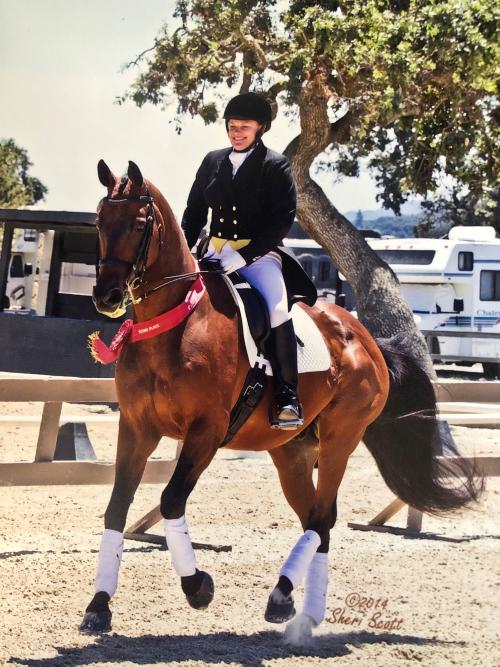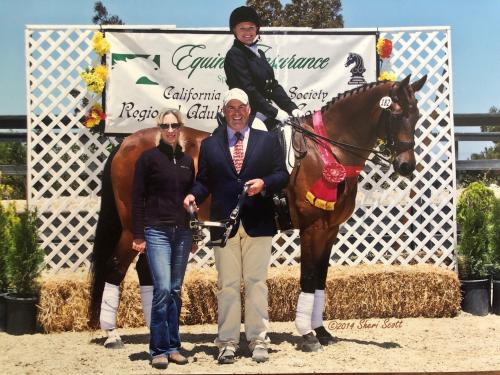Knowing Is Half The Battle
A Local Dressage Rider’s Views on Equine Diagnostic Imaging

For Woodland-based upper level dressage rider Pam Englund,diagnostic imaging has made a significant impact in the lives of her horses. As a long-time client of the UC Davis veterinary hospital, she has utilized diagnostic imaging services at UC Davis for her horses for everything from suspensory ligament injuries to heart conditions.
“I put my animals in the center of the equation,” said Englund. “I want to do whatever will impact their prognosis in the most positive way, which is why I have done the diagnostics that I have done.”
Her beloved horse Laser, who was part of her family from ages two through 24, immediately comes to mind. Talking about him still makes her a little teary. One winter, Laser slipped and “did the splits” in his pasture. X-rays and ultrasound imaging helped the veterinary team determine that he had injured his back, but they had to employ a new ultrasound approach to pinpoint the location of the injury. The treatment plan was built around that finding.
“Had we not done all of those things, I wouldn’t have known what the issue was and how to treat him,” said Englund. “The good news around some of these diagnostics is that they really help you determine the rehabilitation. Do I turn the horse out for a year, or is this a career limiting injury that they are not going to come back from?”
Fortunately, thanks to her diligent approach to Laser’s rehabilitation, he recovered and successfully returned to upper level competition. In the following years, Englund and the UC Davis imaging, lameness, internal medicine and farrier services further managed Laser through laminitis, a torn suspensory ligament, an unexpected heart murmur and a piece of wood that lodged in his neck and almost pierced his jugular vein.

“The X-rays and veterinary and farrier support kept him going for a long time,” she reflected. “If I hadn’t had the ability to do the diagnostics and the support to navigate the treatments, any of these things could have taken him out of competition.”
As part of ongoing management for her horses, Englund has also begun regularly taking advantage of radiographs to do farrier films for her horses every few years to monitor for any changes in the hooves. “Farrier films were very helpful for my farrier to know angles and sole depth,” she said.
Looking back, Englund credits the relationships that she has built with UC Davis clinicians and staff for the positive outcomes for her horses.
“It’s really important to develop a good rapport with who is treating your animal,” she emphasized. “Everyone that I have dealt with at UC Davis has been very knowledgeable, empathetic, and pragmatic. Every horse has been very well cared for. The technicians and night staff that I have dealt with over the years have been impeccable. The whole experience has been really good because I have good relationships with them and they know I’m going to take good care of my horses.”
